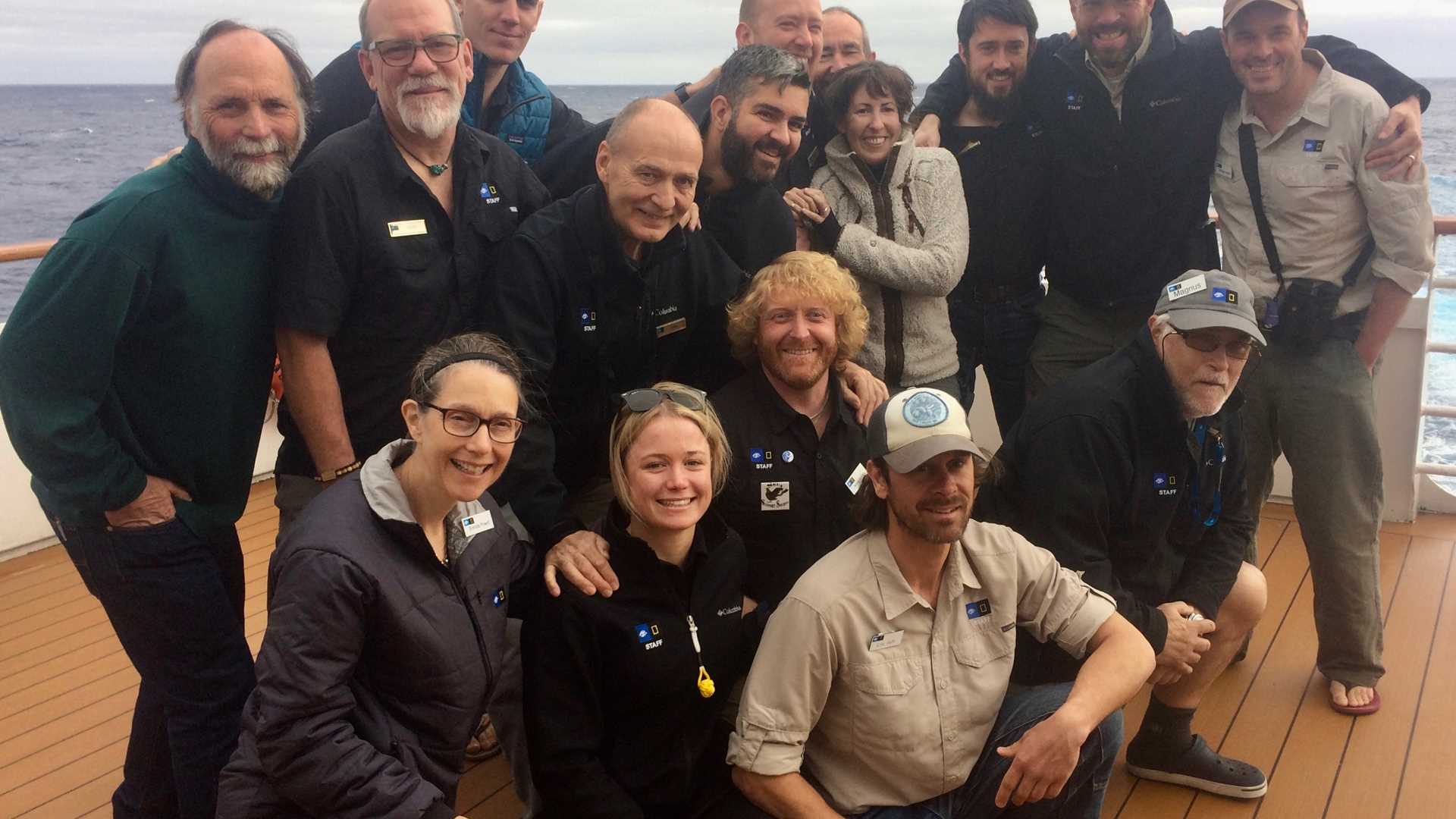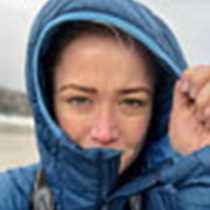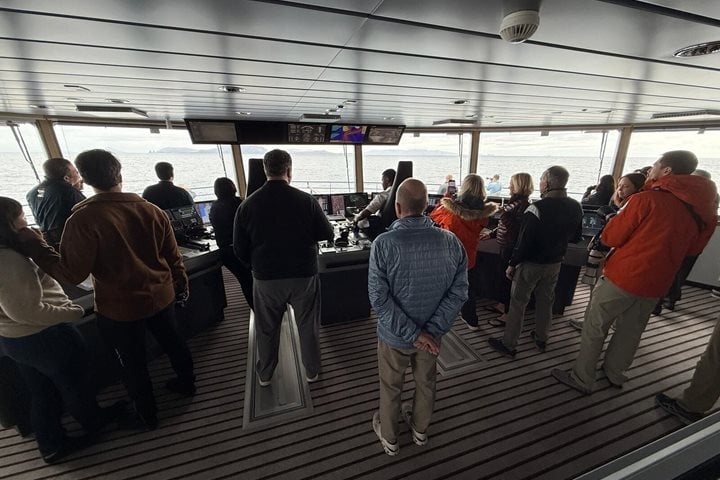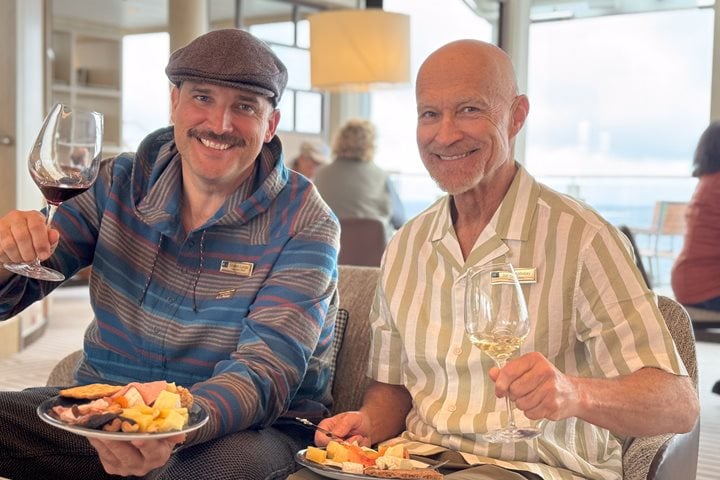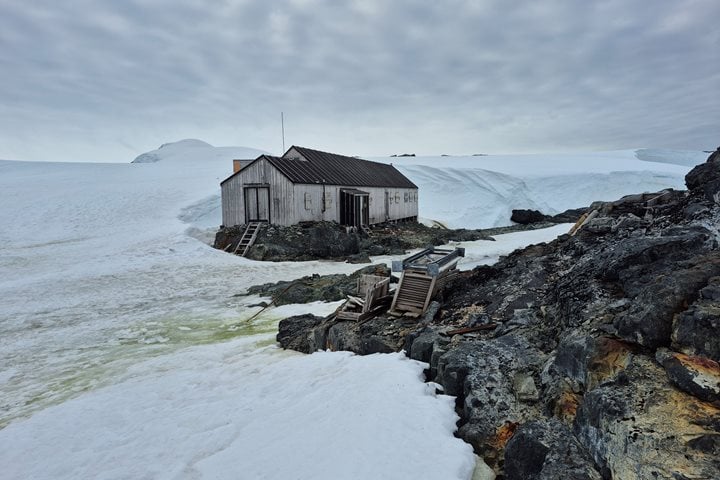The Drake Passage spans 800 km of the Southern Ocean from the southern tip of South America to the northern tip of the Antarctic Peninsula. Known for its treacherous conditions, the Drake Passage bears witness to multiple low-pressure systems every year. Sweeping from west to east these low-pressure systems deliver an array of strong winds, high waves and cold temperatures. Formidable it may be, but the Drake Passage is our gateway to Antarctica and it was the first leg of our enticing expedition to the Antarctic Peninsula, South Georgia and the Falkland Islands on board the National Geographic Explorer.
Serious storms may be a standard occurrence here in the Drake Passage, yet today as we became accustomed to our new moving home we were able to find our sea legs without too much difficulty. A pleasant sea state allowed our first full day on board the National Geographic Explorer to be filled with opportunities to ready us for our visit to the Antarctic Peninsula. We spent the morning familiarizing ourselves with the ship, as well as the staff on board who will be accompanying us throughout the voyage and enlightening us with their knowledge of these far-flung regions of the world. The array of expertise on board is all-encompassing: National Geographic photographers, world leading ice scientists, polar scuba divers, polar historians and ornithologists are to name but some.
It is often the ornithologists and keen bird watchers who enjoy the Drake Passage the most. This wild stretch of ocean may seem daunting to us landlubbers, but for seabirds it is bountiful and the perfect place to call home. Huge populations of seabirds are found down here in the Southern Ocean, not least the resplendent albatrosses, which have been captivating seafarers and explorers of the Southern Ocean for centuries. On board naturalist Santiago Imberti introduced us to the albatross and other seabirds this morning. His presentation allowed us to embark on this voyage with further appreciation and understanding of the seabirds we are already encountering and will continue to encounter as this expedition progresses.
This afternoon was another chance to garner insightful information about the wildlife we hope to encounter. Naturalist and historian Peter Wilson provided a perfect introduction to some of the most endearing and mysterious animals inhabiting the Southern Ocean: whales. We are visiting Antarctica during summertime and this means our chances of encountering whales is high. Many species migrate here from warmer climes at a time of year when the sea ice is at its least extent and the ocean is at its most productive. If we are fortunate enough to see whales we certainly want to know what species we are encountering, thus gaining information about whale identification from Peter was a good primer—and hopefully a good omen!
When it comes to visiting Antarctica and encountering such wildlife there comes a level of responsibility. The areas we are visiting and exploring are unique. They are remote, isolated and have remained undisturbed for millennia. The risk of introducing a non-native plant species or approaching the wildlife too closely is taken into strict consideration. Thus to ensure we are well prepared and not a threat to the delicate Antarctic environment we spent the later afternoon learning about the rules and regulations while ashore. In addition we had all our outerwear inspected and vacuumed to mitigate the risk of carrying a seed ashore that may have become engrained in the Velcro of our waterproofs!
Inspections and vacuuming over it was time to relax into our evening on board the National Geographic Explorer. We’ve figured our way around the ship, although there always seems to be another staircase to discover. We’ve become accustomed to the gentle rolling and pitching as we transit across the Drake Passage and realized it’s not as fearsome as perhaps anticipated. We’ve settled in and are ready for the incredible voyage ahead of us.

